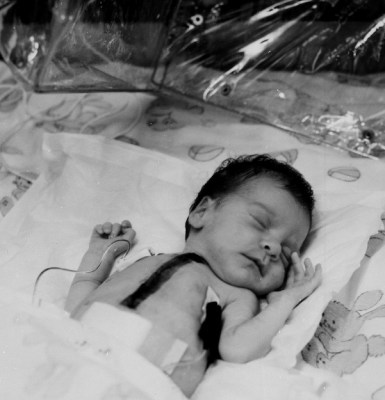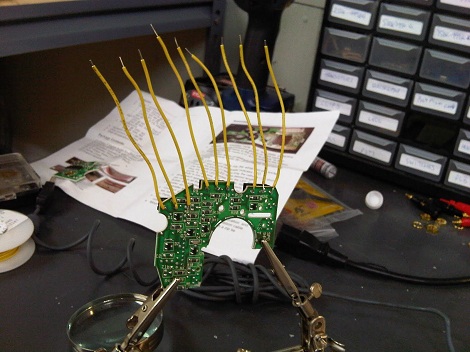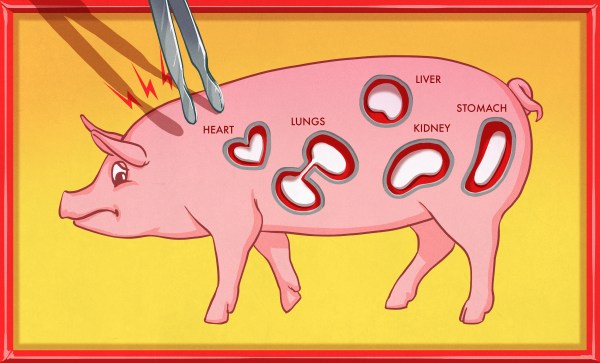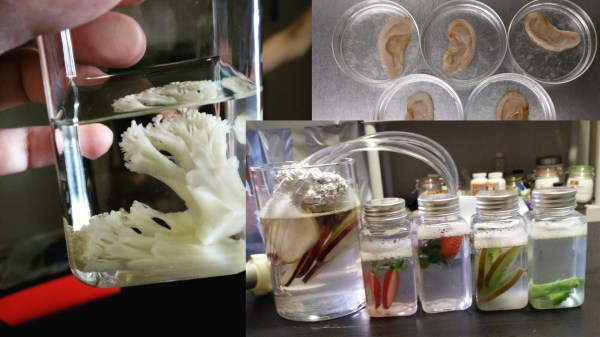The big news this week comes from the world of medicine, where a woman has received a 3D-printed ear transplant. The 20-year-old woman suffered from microtia, a rare congenital deformity that left her without a pinna, the external structure of the ear. Using scans of the normal ear, doctors were able to make a 3D model of what the missing pinna should look like. Raw material for the print was taken from the vestigial ear of the patient in the form of cartilage cells, or chondrocytes. The ear was printed using a bioprinter, which is a bit like an inkjet printer. The newly printed ear was placed into a protective structure and transplanted. The operation was done in March, and the results are pretty dramatic. With a little squinting, it does look a bit like there are some printing artifacts in the ear, but we’d imagine that’s more from the protective cage that was over the ear as it healed.
transplant4 Articles
Swine Of The Times: Pig-to-Human Organ Transplants On Track For 2021
Every day in the US, seventeen people die because they couldn’t get a organ transplant in time. An American biotech company called United Therapeutics is looking to pick up the lifesaving slack by producing a line of genetically-modified pigs for the purpose of harvesting their organs, among other therapeutic uses. United Therapeutics’ pig-farming subsidiary Revivicor is a spin-off of PPL Therapeutics, the company that gave us Dolly the cloned sheep back in 1996. They intend to start transplanting pig organs into humans as early as this year.

Although it sounds like science fiction, the idea of transplanting animal cells, organs, and tissue into humans has been around for over a hundred years. The main problem with xenotransplantation is that it usually triggers severe immune system reactions in the recipient’s body. In one of the more noteworthy cases, a baby girl received a baboon heart in 1984, but died a few weeks later because her body rejected the organ.
The leading cause of xenotransplant rejection is a sugar called alpha-gal. This sugar appears on the cell surfaces of all non-primate mammals. Alpha-gal is problematic for other reasons, too: a condition called alpha-gal syndrome usually begins when a Lone Star tick bites a person and transmits alpha-gal cells from the blood of animals they have bitten. From that point on, the person will experience an allergic reaction when eating red meat such as beef, pork, and lamb.
Continue reading “Swine Of The Times: Pig-to-Human Organ Transplants On Track For 2021”
Decellularization: Apples To Earlobes
Our bodies are not like LEGO blocks or computers because we cannot swap out our parts in the living room while watching television. Organ transplants and cosmetic surgery are currently our options for upgrades, repairs, and augments, but post-transplant therapy can be a lifelong commitment because of rejection. Elective surgery costs more than a NIB Millenium Falcon LEGO set. Laboratories have been improving the processes and associated treatments for decades but experimental labs and even home laboratories are getting in on the action as some creative minds take the stage. These folks aren’t performing surgeries, but they are expanding what is possible to for people to do and learn without a medical license.
One promising gateway to human building blocks is the decellularization and recellularization of organic material. Commercial scaffolds exist but they are expensive, so the average tinkerer isn’t going to be buying a few to play with over a holiday weekend.
Let’s explore what all this means. When something is decellularized, it means that the cells are removed, but the structure holding the cells in place remains. Recellularizing is the process where new cells are grown in that area. Decellularizing is like stripping a Hilton hotel down to the girders. The remaining structures are the ECM or the Extra Cellular Matrix, usually referred to as scaffolding. The structure has a shape but no functionality, like a stripped hotel. The scaffolding can be repopulated with new cells in the same way that our gutted hotel can be rebuilt as a factory, office building, or a hospital.
Woot Lights And Mice Transplants

[Nathan Long] sent in two fairly simple mods he’s been working on. The first is the control of Woot-off Lights via LPT port. A computer checks Woot for the Woot-off logo, and if the logo is spotted, on go the lights. It’s really just a twist on the LED/Arduino email message system, but the creativity is nice.
His other modification is the stuffing of a Microsoft Intellimouse inside of a Logitech Wingman. With the goal of giving the old PS/2 mouse USB capabilities and removing the terrible ball. For those that are asking themselves “why bother? Terrible ergonomics, no scroll wheel, etc.” [Nathan] claims it’s for Quake 2 nostalgia, to each their own we suppose.












